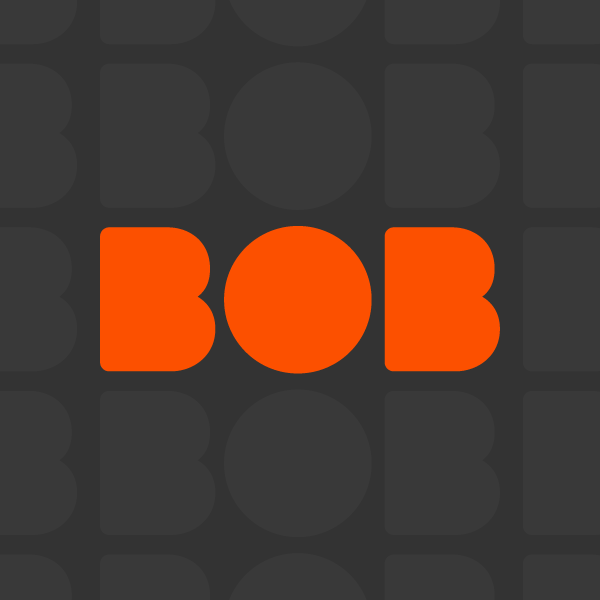There’s no doubt that the world of marketing has changed considerably during the digital age, with brands adopting an increasingly nuanced and integrated approach to building campaigns.
The importance of agile and data-led marketing strategies is particularly important in the paid sphere, where premium native ads can deliver 400% higher click-through rates than regular display messages on mobile devices.
If we expand this concept and apply it across integrated campaigns that feature both on and offline advertising channels, we also see that the audience-first marketing model is crucial to achieving measurable success.
In this article, we’ll explore the concept of audience-first marketing further, while asking how this works and appraising its relationship with out-of-home (OOH advertising).
What is Audience-First Marketing?
As the name suggests, this term refers to a marketing technique that’s audience-centric and focused primarily on the analysis of customer trends and behaviours.
In layman’s terms, deploying this type of marketing strategy can translate into higher levels of knowledge and understanding pertaining to your target audience, creating a scenario where you eventually know them better than they know themselves (in theory at least).
But what does it mean in practical terms?
Well, audience first marketing will see the creation of products, services and messaging specifically to suit target demographics, with a view to developing optimal levels of engagement and an increased rate of sales conversions going forward.
While this may sound simple and effective in equal measure, audience first marketing is actually quite disruptive to the traditional business model that underpins most brands in the modern age.
For example, most product-oriented businesses are launched with a specific product idea, which is evolved and developed to fill a particular gap in the market.
From here, a relevant brand identity and set of values is built to market and sell such a product, building awareness and driving recognition to help drive optimal sales levels.
Then, businesses look to identify and target an audience for the product and brand, before investing their marketing budget through a raft of relevant channels and outlets.
Audience marketing flips this model on its head, as entrepreneurs look to identify key target demographics and understand the factors that motivate each individual consumer.
They then aim to engage these demographics through the creation of tailored content and messaging, building a motivated and loyal audience that affords businesses a solid foundation from which to progress.
The customer-centric insight provided by audience first marketing subsequently informs every other element of the business going forward, from the brand values and identity to the products that are marketed in a cycle and developed clearly with the specific interests of consumers in mind.
The Key Elements of Audience-First Marketing
To begin with, mobile is perhaps the most common audience-first driver of engagement as we approach the end of 2020, with an estimated 70% of all media engagement thought to occur through smartphones (or, to a lesser extent) tablets.
In the true spirit of audience-first media, this trend is likely to become increasingly prominent in line with evolving consumer behaviour.
From a global perspective, the m-commerce sector is now forecast to grow by a staggering $5.1 trillion through 2027
With this in mind, the relationship between audience-first marketing and mobile will become even more prevalent during the coming decade, but we’ll touch a little further on this later in the piece.
Successful segmentation is also key to audience-first and data-led market, as this requires brands to collate huge swathes of information and subsequently categorise consumers into small and manageable groups.
Make no mistake; the smaller the group, the easier it is to create targeted and personalised campaigns, enabling brands to successfully meet the changing demands of their customers and achieve a superior return on their marketing investment.
Ultimately, anyone who wants to optimise their conversion rates and create genuine levels of engagement will need to invest in this type of marketing, while focusing heavily on a nuanced and data-driven mobile strategy.
Why is Audience First Marketing Becoming So Important?
As we can see from the traditional business and marketing model, the concept of customer loyalty is almost an after-thought and the endpoint in the process of building a sustainable audience.
This is a consequence of the historic focus on product and brand development, but it’s arguably an important oversight and potential false economy given that acquiring new customers over time may be up to 25-times more expensive that retaining existing audience members.
Not only is this approach to building a loyal and lucrative consumer base arguably illogical and counterproductive, but it’s also arguably increasingly ineffective in an age where the typical customer attention span is more fleeting than ever.
This is borne out by the numbers across the board, with a fascinating study by Microsoft revealing that the average human attention span has dropped to eight seconds during the digital age, shrinking by nearly 25% in just a few years.
Given this and the fact that the average consumer is exposed to between 6,000 and 10,000 off and online ads in 2021, it’s becoming increasingly hard for businesses to command the attention of customers and cultivate any kind of trust for loyalty.
If this calls for a change of approach, then audience first marketing offers a viable and highly effective solution.
After all, this puts the understanding of an audience’s needs and motivations at the forefront of a particular business, enabling you to create brand and product offerings that are tailormade and capable of engaging customers over an extended period of time.
If we drill down into what this means when creating marketing content and materials, it essentially refers to tailored messaging that’s delivered across a broad and targeted range of on and offline channels.
For example, a campaign that seeks to target a young, professional and female demographic will promote bespoke primary messaging through platforms such as Pinterest (whose user base is 60% women) and out-of-home (OOH) media like billboards.
This not only optimises the reach and impact of your campaigns, but it also demonstrates precisely how well you understand your audience and their core consumer needs.
How to Develop an Audience First Marketing Strategy
Now that we’ve explained the basics of audience first marketing and its importance, the next step is to develop a viable strategy on behalf of your business.
But how should you look to achieve this? Here are some steps that you should keep in mind:
Start By Understanding Your Audience and Their Wants
Let’s start with the basics; as the founding principle of audience first marketing is to understand the wants and needs of your target demographics in fine detail.
While these will vary from one demographic to another, there are a few universal desires that seem to unite particularly influential (and younger) demographics such as Millennials and the members of Generation Z.
According to recent sustainability and behavioural reports, for example, around 70% of Millennials and Generation Z have continually made changes to their purchases and behaviours, based solely on climate change and the eco values of particular brands.
In this instance, businesses with strong eco values and a keen focus on sustainability can efficiently target such demographics, learning more about customers aged between 18 and 40 and promoting their brand accordingly.
The takeaway here is crucial; as the process of identifying potential audiences and further understanding their key motivations can help to inform your brand, product or service in detail, from the way in which you market yourself to the materials used to manufacture products and the distribution of profits to charitable causes.
Similarly, taking time to understand particular demographics and the unique behaviour of customers allows you to identify factors that make their lives difficult or inconvenient.
Make no mistake; this helps you to understand and determine viable gaps in the particular markets, leading to the development of products that are most likely to drive high demand and optimise profitability.
Tailor Your Products or Services to Meet the Needs of Consumers
This leads us neatly onto the next step, with this embodied by the notion of developing a tool or product offering to solve a specific issue or inconvenience.
At this stage, it’s also crucial that you consider the importance of brand authenticity, especially when looking to satisfy the growing desire of younger consumers to make positive social and environmental changes.
Even in general terms, 86% of customers across the board say that authenticity is crucial when choosing whether or not to support a brand, while a further 81% say that they need to trust any business that they buy from.
From an environmental perspective, some 81% of customers prefer to buy from sustainable sellers, but only those that can demonstrate their commitment to eco-friendly initiatives and remain true to the relevant values at all times.
So, if you do decide to leverage audience first marketing to target eco-savvy customers with a passion for sustainability, it’s crucial that your brand authentically backs sustainable processes and doesn’t act in a contradictory manner to its pledges and promises.
Use Inbound Marketing That’s Focused Around the ‘Fix’ or Cause
Ultimately, audience first marketing has a great deal in common with other inbound marketing practices, with the latter describing techniques that focus on the creation of engaging content and construction of lasting relationships with consumers.
The most popular iterations of inbound marketing include topical blog posts, social media channels and campaigns, SEO (Search Engine Optimisation) and eBook publication.
So, it’s your job to understand the channels that are most popular among your consumers, before utilising these as part of integrated and ultimately tailored marketing campaigns.
This represents the first stage of curating bespoke primary, secondary and tertiary messaging to suit the behaviour and consumption habits of your customers, as you look to target them through the sites and platforms that they utilise the most.
Another key element of your messaging is to ensure that it’s focused around the wants and needs that we discussed earlier in the piece, in order to create a consistent and engaging theme that serves as a viable emotional hook for your audience.
If you’re creating a campaign built around sustainability, for example, your core messaging must play into this in a concise and easy to understand manner (particularly if you’re marketing a relevant product or service to resolve a sustainability challenge).
Similarly, the campaign must be delivered in a sustainable and eco-friendly manner, from the materials that you use when cultivating offline ads (such as traditional billboards or posters) to the minimisation of non-recyclable or non-reusable materials.
Ultimately, maintaining a core focus on the purpose and delivery of your campaigns is key to successful audience first marketing strategies, as is the combination of channels through which you target your audience.
Choose the Right Media and Locations
As we’ve already said, you can use various technologies and measurements to understand the behaviour of your customers when they’re out of the home and subsequently place ads in the most potent locations.
However, you also need to select the right media to suit each location, with large-format 48 and 96-sheet billboards ideal for advertising at high traffic and roadside locations respectively.
Conversely, smaller posters and ads may be ideal at bus stops and train stations, as these messages typically look to blend seamlessly into the natural environment and target customers in the most non-intrusive way imaginable.
For small and medium-sized firms, there’s also a strong argument to invest in traditional billboards over digital alternatives (particularly when advertising in high-traffic or highly visible locations).
To begin with, this type of paper-based ad is considerably cheaper than digital alternatives, whether you’re looking to secure a two-week booking or maintain an advertising presence over the course of the year.
Additionally, traditional billboards provide far greater levels of exposure to brands, with one advert featuring a single brand and message for the duration of a particular booking.
When you invest in a digital billboard, you’ll typically have to share the advertising real estate with up to five other brands.
This means that six ads will usually rotate over the course of a minute, meaning that your message may only be visible for 10 seconds at a time.
While you won’t have to share the space with competing brands, this can dramatically minimise your exposure and potentially cause your ad to pale in direct comparison to others.
Use Your Customer’s Quirks and Behaviour to Inform Your Design
Another interesting way of identifying audience quirks and behaviours is to use billboards or OOH ads that are capable of recognising cars and individuals on foot before creating personalised messaging to target them more effectively.
With one particular example, Shell Malaysia unveiled a digital ad in 2018 that could capture vehicles as they passed through the Jalan Maarof in the Southeast Asian nations.
Utilising video technology, cars were identified and categorised according to their make and model before being targeted with customised messaging once they’d become stationary.
If we take this principle and apply it to OOH media as a whole, we can see that it’s possible to identify certain datasets and information by targeting customers as they pass adverts.
In this instance, for example, you can make observations about a driver’s likely income and their favourite colour, which can in turn help to inform future messaging and the design of specific ads.
It can certainly help you to target key demographics with the right products and price premiums, while enabling you to create the ideal colour scheme based on customer preferences and your existing brand palette.
If you’re able to collate large swathes of data from the same demographic over time, you can even identify the ideal font and type of imagery for future OOH campaigns.
Why Audience First is a Requirement, Not an Option
As we mentioned earlier, it’s now harder than ever to engage and retain customers in the digital age, especially given the saturation of the online ad space and the increasingly discerning nature of modern-day customers.
Certainly, Millennials and younger demographics are increasingly cynical when it comes to big brands and their messaging, which is why 64% of younger customers use ad-blocking software on at least one of their devices.
With these points in mind, businesses are having to compete more aggressively for a viable audience and consumer base, especially when looking to target increasingly influential demographics such as Millennials.
As a result, companies can scarcely afford to ignore the merits of audience first marketing, with this more of a requirement than a choice.
Of course, execution is key to the successful implementation of audience first marketing (as with any type of paid or organic promotion), so carefully defining your target market, identifying their behaviours and creating content specifically for them is absolutely key.
To this end, specific tools such as those available through the Google Display Network (GDN) can help you to implement an audience first strategy, enabling you to identify a viable audience and ensure that your product or service is presented directly to them.
This also enables you to identify so-called ‘Affinity Audiences’, which are defined as TV-style audiences that are designed to connect brands with their ideal consumers online and at scale.
This can be highly beneficial in the right hands, and it certainly provides a solid foundation for your audience first approach.
Ultimately, with a detailed understanding of audience first marketing and how to implement it, you can create a more loyal consumer base over time while enhancing the quality of the leads that you generate.










